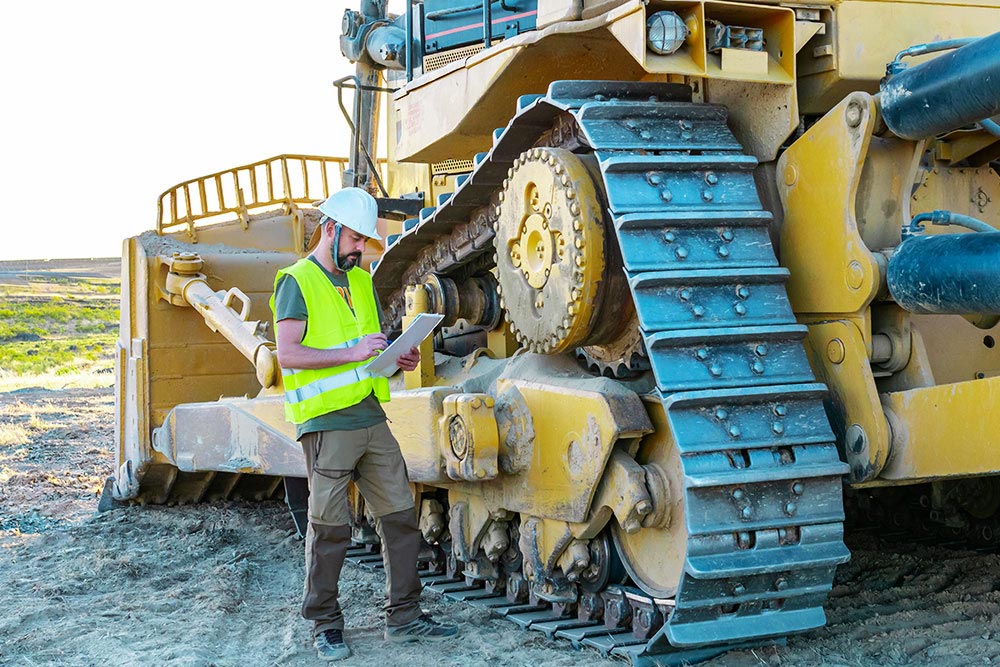
PUWER. You might think it sounds like the name of a comic book action hero. It’s not, though. PUWER’s superpower is the ability to save people from injury or death caused by equipment or machinery in the workplace.
The PUWER regulations are rules about using work equipment and machinery safely. They apply to virtually every workplace and worker in the UK.
If you confused PUWER with some caped crusader or are unfamiliar with the regulations, keep reading. We’ll take the mask off the PUWER regulations and explain what you need to know about the power of PUWER.
What Does PUWER Stand for Exactly?
PUWER is an acronym for the Provision and Use of Work Equipment Regulations 1998.
PUWER doesn’t stand for ‘Protector of the Universe, World, Earth or things beginning with R.’
The PUWER regulations build on the Health and Safety at Work etc. Act 1974 and the Management of Health and Safety at Work Regulations 1999. While these pieces of legislation deal with health and safety obligations in general, PUWER specifically covers work equipment and machinery.
PUWER is supported by an Approved Code of Practice (ACOP) from the Health and Safety Executive (HSE). Other health and safety legislation that works in conjunction with PUWER include:
- The Personal Protective Equipment at Work (Amendment) Regulations 2022
- The Electricity at Work Regulations 1989
- The Supply of Machinery (Safety) Regulations 2008
What Are Your Obligations Under the PUWER Regulations?
PUWER requires that all equipment or machinery in the workplace is safe to use and suitable for its intended use. Under PUWER, all work equipment and machinery must be installed correctly, maintained properly and regularly inspected for faults.
The PUWER regulations mandate that employees know how to safely operate work equipment and machinery and have received adequate instruction and training.
PUWER requires that suitable health and safety measures be applied to the use of all work equipment and machinery.
Protective devices and controls must be used. These can include:
- Guard rails
- Guards
- Electrical isolation shielding
- Emergency stop devices
- Warning devices
- Visible and legible markings
- Sufficient lighting
- Stabilisation measures
What Machinery and Equipment Do the PUWER Regulations Cover?
PUWER covers:
any machinery, appliance, apparatus, tool or installation for use at work (whether exclusively or not).
The scope of equipment and machinery covered by the regulations is vast. It would be a superhuman task to list them all here. But let’s look at a few examples, anyway.
The PUWER regulations cover everything from toolbox tools like hammers to:
- industrial machinery
- lifting equipment
- ladders
- mobile scaffolds
- circular saws
- vehicles
- computers
- printers
- display screen equipment (DSE)
- portable electrical equipment
- refrigerators
- microwaves
- kettles
Automatic doors, lifts and escalators also fall under the PUWER regulations.

PUWER covers using substances like acids, slurry or concrete and even applies to livestock!
Who Do the PUWER Regulations Apply To?
PUWER applies to all UK employers, employees and self-employed people. Anyone who buys, hires out, hires or uses work equipment or machinery has to abide by the PUWER regulations.
Under PUWER, the use of equipment is defined as
any activity involving work equipment and includes starting, stopping, programming, setting, transporting, repairing, modifying, maintaining, servicing and cleaning.’
But PUWER’s superpowers don’t apply to everyone. The armed forces, for example, are exempt from PUWER.
The PUWER regulations don’t apply to any equipment used by domestic workers in private households unless the equipment has been supplied by their employer or themselves if they’re self-employed.
Any equipment used by the public, like filling station pumps, for example, is NOT covered by the regulations.
How to Comply with PUWER Regulations
To stay in line with PUWER, employers must ensure that all work equipment and machinery is safe to use, suitable for its purpose and used as intended.
All risks associated with work equipment and machinery must be assessed and control measures must be implemented to eliminate or minimise the risks.
Work equipment and machinery must be correctly installed and in good working order. Regular PUWER inspections and maintenance of equipment and machinery must be done and detailed records must be kept if appropriate.

Staff should be provided with adequate instructions, information and training on the equipment and machinery they use.
Employees must use all equipment and machinery for its intended purpose. They must do so in a manner that doesn’t put themselves or anyone else at risk of harm.
What Happens if You Breach PUWER Regulations?
HSE inspectors enforce the PUWER regulations. HSE inspectors can come to your place of business at any time. They don’t have to give you a reason; they must be allowed access.
They can inspect your equipment, review your records, issue enforcement notices and begin prosecution proceedings.
Breaching the regulations can result in unlimited fines, criminal charges and imprisonment.
Case Studies of PUWER Breaches
In a recent case in Hampshire, a worker seriously injured his hand while using a drill. As a result, the HSE found the company was guilty of breaching PUWER. The HSE alleged that the company didn’t install sufficient guards to protect workers from the rotating drill shaft.
A Magistrates’ Court agreed, and the company was fined £76,000 and made to pay £10,525 in costs.
In another recent case, the HSE accused a company of failing to prevent its workers from using defective lifts. Ultimately, the company was found guilty and had to pay a fine of £200,000 and court costs of £17,217.84.
Breaches of PUWER can result in outcomes that cost people more than just money.
In 2017, an individual was tragically killed while working for a Warwickshire company. The individual suffered fatal head injuries when a hydraulic cylinder exploded during testing. A court found the company guilty of breaching PUWER and issued an £800,000 fine.
Nine workers lost their lives in the 2022/23 period because of contact with moving machinery – some 10% of all workplace fatalities in that year, according to HSE figures.
The Importance of Accredited PUWER Training
The PUWER regulations aim to prevent injuries and fatalities in the workplace. Around 4% of non-fatal injuries in 2022/2023 were due to contact with moving machinery. A PUWER training course will teach you how to keep your workplace safe.
Get the PUWER powers you need to protect your business and your people. Be a real-life health and safety superhero.
Sign up for our PUWER Management & Inspection for Duty Holders course today.
































































































































































































































































































































































































































































































































































































































































































































































